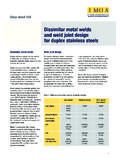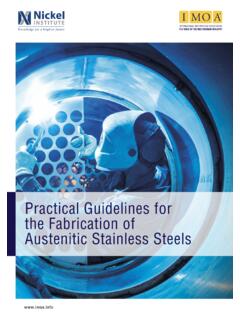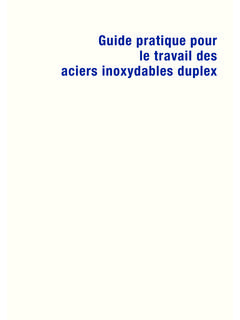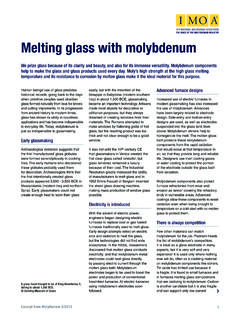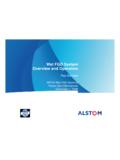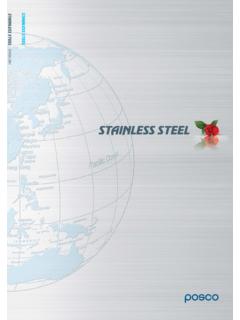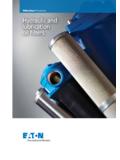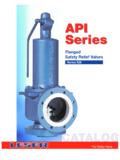Transcription of Bending, cold forming, and springback of duplex …
1 1 Bending, cold forming, and springback of duplex stainless steelsDuplex stainless steels have shown goodformability in a variety of applications of duplex stainlesssteels require relatively simple forming, such as the rolling of cylindrical sections,press forming, and vessel and tank headforming by pressing or rolling. In most ofthese applications, a primary concern isthe high strength of duplex stainless steeland the power of the forming typical first estimate is that a duplexstainless steel will respond to formingsimilar to a 300-series austenitic grade at twice the thickness. A comparison ofthe minimum force required to beginplastic deformation in bending is shownin Figure 1for several stainless steels. The lower ductility of duplex stainlesssteels compared with austenitic stainlesssteels must also be taken into grades have a minimum required elongation of 15 to 30% in mostspecifications in comparison with the40% minimum elongation required for theaustenitic grades.
2 The duplex grades require a more generous bend radius thanaustenitic grades or need intermediatesolution annealing in severe or complexforming because of their lower solution annealing temperaturesfor duplex stainless steels are summarizedin Table 1. steel gradesBending force (kN)Figure 1: Minimum force required to begin plastic deformation in bending of 2304,2205, and 316L test samples 50 mm (2 inch)wide and 2 mm ( inch) sheet 102 Table 1: Minimum solution annealing temperatures for duplex stainless steelsSource: Outokumpu OutokumpuGradeUNS annealing temperature C F2304S323049801800S3200310101850S3200110 401900S3210110201870S322029801800S820111 01018502205S3220510401900S325061020 11201870 2050S325201080 11201975 2050255S32550104019002507S327501025 11251880 2060S3276011002010S327071080 11201975 2050 Source: Producer data sheets and ASTM A 4802 While the high yield strength of duplexstainless steel can allow down gauging, it can also pose challenges during fabrication.
3 Because of their higherstrength, plastic deformation requireshigher forces. The springback in bendingoperations is larger than with austeniticstainless steels because of the higherbending forces required for duplex stainless steels. A springback comparisonof two duplex stainless steels and Type316L austenitic stainless steel is shownin Figure use of stress relief treatments to reduce the cold work from forming orstraightening operations is not duplex stainless steels inherentlyhave very good chloride stress corrosioncracking resistance and this can be only marginally improved by reducingresidual cold work. There is no satisfactorytemperature below the solution annealingtemperature at which stress relief can be employed without the danger of formation of intermetallic phases, whichwill lower corrosion resistance and reduce toughness. Figure 2: Comparison of springback of duplex stainless steels and Type 316L for 2 mm ( inch) thick sheet.
4 11022052304316L1005040302090807060103040 5060708090100110120 Bending angle (degrees)Final bend angle (degrees)Shop sheet 102 Source: OutokumpuExcerpt from Practical Guidelines for the Fabrication of duplex stainless Steels Second Edition 2009. Produced by IMOA. 07/14 The International Molybdenum Association (IMOA) has made every effort to ensure that the information presented is technically correct. However, IMOA does not represent or warrant the accuracy of the information contained in this shopsheet or its suitability for any general or specific use. The reader is advised that the material contained herein is for information purposes only; it should not be used or relied upon for any specific or general application without first obtainingcompetent advice. IMOA, its members, staff and consultants specifically disclaim any and all responsibility of any kind for loss damage, or injury resulting from the use of the information contained in this publication.
